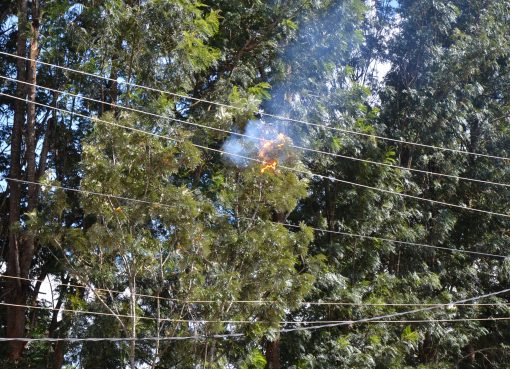Nairobi Governor Mr. Johnson Sakaja and his team have put forward an unwavering commitment to safeguard the lives and properties of Nairobi residents amidst looming El Nino Rains.
The comprehensive strategy is designed to tackle the impending El Nino rains and provide citizens with tools and support necessary to confront the environmental challenge head on.
The plan, which represents proactive governance, promises to be a beacon of hope in the face of adversity. The disaster management plan unveiled by the team, developed after careful consultation with disaster management experts and climate scientists, focuses on three key pillars: Preparedness, response and recovery.
While lauding the city government for the resolute dedication, Cabinet Secretary for Lands, Public Works, Housing and Urban Development Mr, Zachariah Mwangi Njeru acknowledged that investing in disaster preparedness can help mitigate impact, save resources and protect development progress.
He added that disaster preparedness is one of the most critical functions of urban service delivery, and urged leaders to unite and put a set of measures with a primary goal being to prevent negative outcomes that may result in destruction of property, loss of lives and livelihood from the October-November-December (OND) coming El Nino rains.
The CS further said that as the multi-sectoral team gears up for the task, the mitigation components to be addressed includes ensuring physical infrastructure that is; stone water drainage, garbage collection, and sewer drainage to be able to sustain flushing water to reduce floods risks.
“As the National Government looks forward to collaborating with the County Government of Nairobi on this strategy, we are keen to ensure that social activities, public awareness, communication and coordinated humanitarian activities are in place,” stated Njeru.
Most importantly, he emphasized that disaster management is only effective when there is well coordinated and collaborative efforts between all stakeholders concerned.

On the mapping of hotspot areas likely to be affected by floods, the CS asked residents residing in such places to cooperate with authorities on measures outlined to avoid loss of lives and other fatalities.
While addressing 3,500 youths employed by the county government to help implement the disaster Marshall plan at Uhuru Park yesterday, Sakaja advised the group on the importance of discipline and hard work as they look forward to deliver their best, as well as promising that his government will recognize and reward those who will be dedicated.
During the launching of the Marshall plan, Sakaja pointed out five causes of poor drainage that increases possible flooding risks in Nairobi. Namely: Poor building system that did not meet requisite standards, presence of inadequate and ill-maintained drainage, encroachment on rivers reserves, weak regulations on planning and enforcement and climate change unpredictability.
On recent reports about buildings collapsing in some parts of the city, Sakaja encouraged contractors and developers to avoid taking shortcuts by buying fake building materials that may pose risks to loss of lives, and asked them to demonstrate professionalism in their work.
On efforts to counter the above causes by the county government, the Governor unveiled strategies to tackle the highlighted causes in preparedness of OND season El Nino rains.
According to Sakaja, the crisis blueprint plan involves timely unclogging of the drainage system and full and thorough review of the enforcement plan as he revealed that more policies on the marshal plan to solve the impending emergency will be communicated later on.
By Samson Nkooma





